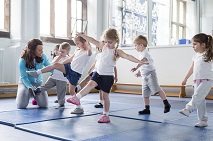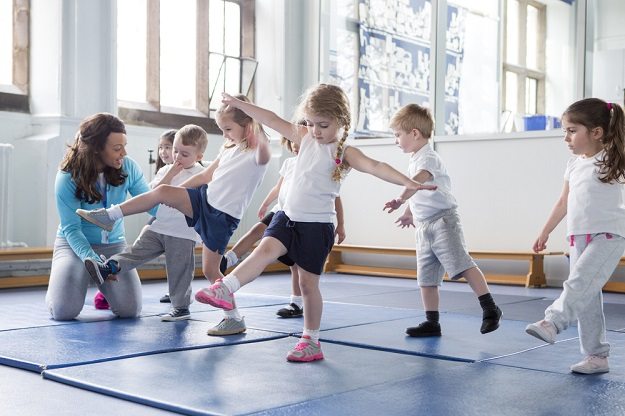Early Childhood Education: The Power of Play in Physical Education

School is not strictly about academic development, particularly when it comes to early childhood education. Numeracy and literacy are key, but so too is the moral, social and emotional development that can come through casual interactions with fellow students and teachers. Playtime is the perfect opportunity to foster this development, and what better place to begin incorporating play than into physical education curriculum?
As a partner of the Together Counts™ program for healthy, active living, we believe the power of play should not be underestimated. Play is defined as the unstructured and unmotivated creation of fun activities for the purpose of entertainment – and as a byproduct, education.
Physical Activity and Beyond
While physical fitness is a main objective of physical education, including play during activity time can also provide a mental workout for children.
In an article for Earlychildhood News, Dr. Francis Wardle talks about why play is critical to academic success. He highlights how play provides a fun and accepting environment for children to learn important social concepts such as sharing, cooperation, participation, and the idea of give and take.
Play can also reinforce the importance of rules and listening to the leadership of others. Many games and sports such as “Follow the Leader,” “Simon Says,” and baseball cannot proceed unless everyone is playing fairly and following instructions. This lesson taught through play is one that translates directly to the real world. Not only that, but playtime activities will help children gain the emotional intelligence they need to grasp concepts of winning and losing. Play in physical education programs can also play a role in encouraging childhood adoption of healthy routines.
Taking It Outside
An excellent way to foster play in a PE class is to leave the gymnasium all together. Outdoor physical education classes are increasing in popularity across America. Breakwater School, a private institution in Portland, Maine, has an adventure-based physical education program. As part of that program, students are taken outdoors and allowed to play and interact with nature. While there are a structured series of activities, the program also gives children the freedom to explore their surroundings, build confidence, and learn in an atmosphere that does not feel like a classroom.
By being outside, children can also incorporate elements of constructive play. There’s a reason why nature can be called a playground – a fallen tree can become a bridge or teeter-totter, dirt can become a canvas for a new work of art, and a trail in the bush can become an obstacle course. By allowing children to discover and construct their own playthings in nature, you are not only increasing their physical fitness, but also fostering creative thought and a sense of ownership and responsibility over the natural world.
A Play Endemic
The role of playtime is being lost not only in PE classes but also in schools as a whole.
In the end, teachers and school administrators must make an effort to bring play back into the curriculum. The internet is a great resource for teachers to find activities to create engaged physical education classes.
Ultimately a PE class that includes play is an opportunity for kids to have more fun and greater freedom – and that will make them not only enjoy PE class more, but school as a whole.
For more healthy living ideas, check out these reads from Together Counts:
- Incorporating Greens in to Your Kid’s Diet
- Recipe Hacks for Better Nutrition
- From a Registered Dietitian’s Point of View: Healthy Heart Pledge Testimony

